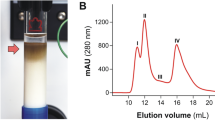Abstract
RATS develop a marked resistance to reinfection with Fasciola hepatica after a single immunising infection1,2. This resistance is apparent within 2 weeks of initial infection3,4 but diminishes in long-standing infections4. Resistance does not depend on the presence of the initial infection at the time of challenge2, and operates against intraperitoneally implanted metacercariae, juvenile or adult flukes3 as well as against orally administered metacercariae. Implantation (subcutaneous or intraperitoneal) with adult flukes does not stimulate marked resistance to challenge3,5, and these implanted flukes may persist for many months in the cysts which form around them in the rat. Resistance may be transferred by cells6 or, provided that it is given at the time of challenge, by immune serum7; serum administered 6–8 d after infection is not effective7. However, the flukes of the immunising infection persist in the rat in an apparently normal healthy condition1,2 and clearly evade the mechanism which controls challenge infections. We report here experiments which show that F. hepatica produces substances which are toxic to its host's lymphocytes and that these substances may protect the parasite from its host's immune defences.
This is a preview of subscription content, access via your institution
Access options
Subscribe to this journal
Receive 51 print issues and online access
$199.00 per year
only $3.90 per issue
Buy this article
- Purchase on Springer Link
- Instant access to full article PDF
Prices may be subject to local taxes which are calculated during checkout
Similar content being viewed by others
References
Hayes, T. J., Bailer, J. & Mitrovic, M. Parasitology 58, 1103–1105 (1972).
Goose, J. & Macgregor, M. Br. vet. J. 129, 49–52 (1973).
Goose, J. thesis, Brunel Univ. (1977).
Hughes, D. L., Harness, E. & Doy, T. G. Nature 267, 517–518 (1977).
Anderson, J. G., Hughes, D. L. & Harness, E. Br. vet. J. 131, 509–518 (1975).
Corba, J., Armour, J., Roberts, R. J. & Urquhart, G. M. Res. vet. Sci. 12, 292–295 (1971).
Hayes, T. J., Bailer, J. & Mitrovic, M. J. Parasit. 60, 930–934 (1974).
van Furth, R. & van Zwet, T. L. in Handbook of Experimental Immunology (ed. Weir, D. M.) 36.1–36.24 (Blackwell, Oxford, 1973).
Author information
Authors and Affiliations
Rights and permissions
About this article
Cite this article
GOOSE, J. Possible role of excretory/secretory products in evasion of host defences by Fasciola hepatica. Nature 275, 216–217 (1978). https://doi.org/10.1038/275216a0
Received:
Accepted:
Issue Date:
DOI: https://doi.org/10.1038/275216a0
This article is cited by
-
Proteomic analysis of Fasciola gigantica excretory and secretory products (FgESPs) interacting with buffalo serum of different infection periods by shotgun LC-MS/MS
Parasitology Research (2019)
-
Defence against the immune barrage: Helminth survival strategies
Immunology & Cell Biology (1996)
Comments
By submitting a comment you agree to abide by our Terms and Community Guidelines. If you find something abusive or that does not comply with our terms or guidelines please flag it as inappropriate.



